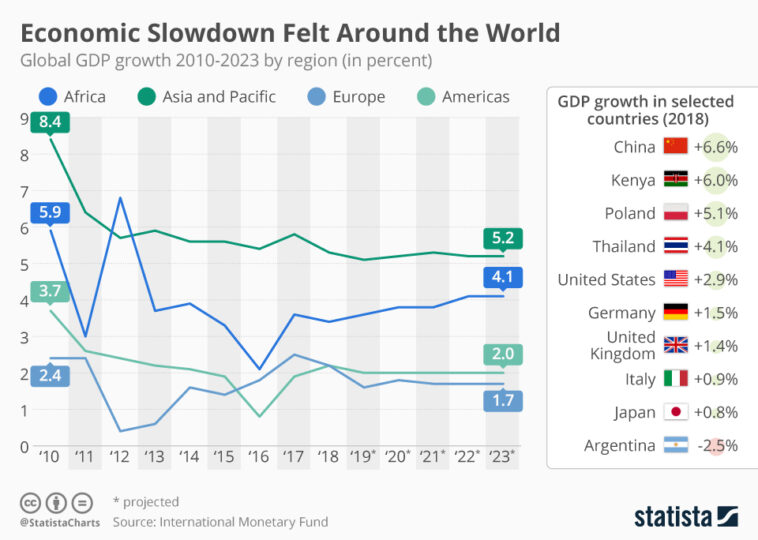On Monday, the global financial environment saw a surge in stock markets as the United States and China, the two top economies by size, confirmed a pause in their ongoing trade disputes for a period of three months. Both nations agreed to temporarily roll back extensive levies that had been levied on each other’s goods. These tariffs were predicted by financial experts to potentially trigger a downturn and disrupt supply chains to such an extent that it could result in shortages on American retail shelves.
The S&P 500, a reflection of the overall US stock market, saw an increase of 3.3% bringing it almost 5% shy of its record high achieved in February. This significant index had been making a strong recovery from a near 20% drop last month, boosted by the hope that President Donald Trump may lower the current tariffs following successful negotiations with different nations.
The performance of the S&P 500, which is imperative to many 401(k) retirement accounts, has now surpassed its level from April 2nd. This date, referred to as ‘Liberation Day’ by Trump, marked the start of global tariffs which had created concerns about a possible self-caused economic slump. Alongside this, the Dow Jones Industrial Average rose by 1,160 points or 2.8%, whereas the Nasdaq composite exhibited an increase of 4.3%.
The market improvements followed what was termed as the ‘best case scenario’ for tariff discussions between China and the US. This exceeded expectations in terms of the reduction in tariffs, which had a ripple effect across other financial sectors. Even crude oil prices escalated due to predictions of a global economy less constrained by tariff pressures consuming more energy.
The effect of the trade discussions was not isolated to oil alone; with the US dollar growing stronger against a plethora of international currencies, ranging from the Japanese yen to the Swiss franc. Treasury yields also saw growth as assumptions were made that the Federal Reserve would not require a steep cut in interest rates this year to guard the economy against tariff repercussions. Conversely, the price of gold took a hit as the safer option became less attractive to investors.
The decision to pause further tariff introductions may result in a 0.4% boost this year in the economic growth of the United States. This is of significance considering the US economy registered a contraction at a 0.3% annual rate in the preceding quarter. The agreed terms will see a reduction in the levy on Chinese imports to the US from a staggering 145% to a reasonable 30%.
Simultaneously, China declared a reduction in tariffs on American goods from a high of 125% to a mere 10%. The pause in tariff implementations for 90 days is to allow for further discussions to take place, following the constructive progress made during the weekend’s negotiations. This respite is exceptionally beneficial for suppliers and retailers, providing room for them to adequately stock shelves for the upcoming back-to-school and festive shopping seasons.
However, being accustomed to the sporadic imposition and withdrawal of tariffs, Wall Street remains cautious given the fluidity of Trump’s approach. Despite the temporary relief, significant hurdles persist in the negotiations between the two nations. There is no assurance of swift resolutions, and the process could be slow and arduous.
The announcement of this temporary truce between China and the US followed an agreement with the UK that would also entail a reduction in tariffs on a significant number of UK imports to a nominal 10%. However, the completion of this deal will necessitate several more weeks for details to be finalized.
Scheduled economic reports for the week may reveal the extent of the impact that the uncertainty revolving around tariffs has inflicted on the US economy. Despite this looming worry, Wall Street was in high spirits on Monday, with substantial gains recorded across the board. Smaller companies, in particular, bore the brunt of the positivity as their fortunes are intimately tethered to the US economy’s performance.
Several apparel companies, including Lululemon which witnessed a surge of 8.7%, saw positive gains due to the potential reduction in tariffs. The company sources over a quarter of its fabric from mainland China, and a reduction in tariffs reduces the need to decide whether to pass on costs to consumers or absorb them in the form of decreased profits. Nike also experienced a boost with its shares rising by 7.3%.
Travel companies, anticipating an increase in customer spending due to lower tariffs, also experienced a jump in their shares. Carnival saw a surge of 9.6% while Delta Air Lines experienced a spike of 5.8%. Similarly, retailers are also expected to benefit from this move since a significant portion of their merchandise is imported from China and other Asian countries.
In terms of exact figures, the S&P 500 observed an increase of 184.28 points, settling at 5,844.19. The Dow Jones Industrial Average rose by 1,160.72 points, stabilizing at 42,410.10, while the Nasdaq composite surged by 779.43 points to 18,708.34. Globally, the majority of Asian and European stock markets also rose, albeit more modestly compared to the U.S. stock market.
Last but not least, the bond market witnessed a rise in the yield on the 10-year Treasury note to 4.47% from 4.37%, with the yield of the 2-year Treasury note, more reflective of the Federal Reserve’s actions, increasing even more dramatically from 3.88% to 4.00%. Eying this development, many traders are now anticipating only two cuts this year.

